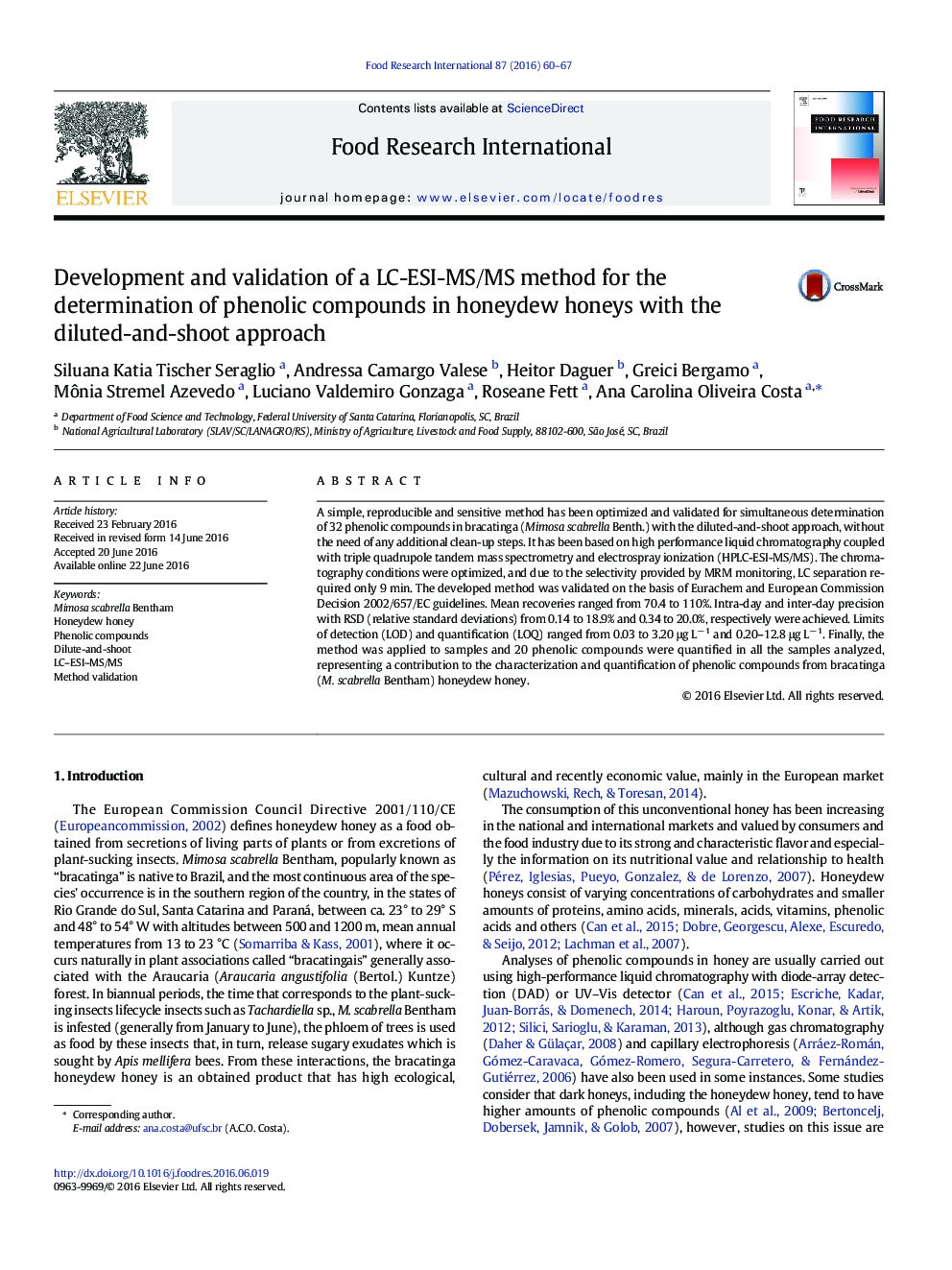| Article ID | Journal | Published Year | Pages | File Type |
|---|---|---|---|---|
| 4561200 | Food Research International | 2016 | 8 Pages |
•The bracatinga (Mimosa scabrella Benth.) honeydew honey is a source of phenolic compounds•A validated LC-MS/MS method for the analysis of 32 phenolic compounds was developed•A simple, environmentally friendly dilute-and-shoot approach was performed•20 phenolic compounds were identified among the samples analyzed•Presence of 6 phenolic compounds was reported for the first time in this study
A simple, reproducible and sensitive method has been optimized and validated for simultaneous determination of 32 phenolic compounds in bracatinga (Mimosa scabrella Benth.) with the diluted-and-shoot approach, without the need of any additional clean-up steps. It has been based on high performance liquid chromatography coupled with triple quadrupole tandem mass spectrometry and electrospray ionization (HPLC-ESI-MS/MS). The chromatography conditions were optimized, and due to the selectivity provided by MRM monitoring, LC separation required only 9 min. The developed method was validated on the basis of Eurachem and European Commission Decision 2002/657/EC guidelines. Mean recoveries ranged from 70.4 to 110%. Intra-day and inter-day precision with RSD (relative standard deviations) from 0.14 to 18.9% and 0.34 to 20.0%, respectively were achieved. Limits of detection (LOD) and quantification (LOQ) ranged from 0.03 to 3.20 μg L− 1 and 0.20–12.8 μg L− 1. Finally, the method was applied to samples and 20 phenolic compounds were quantified in all the samples analyzed, representing a contribution to the characterization and quantification of phenolic compounds from bracatinga (M. scabrella Bentham) honeydew honey.
Graphical abstractFigure optionsDownload full-size imageDownload as PowerPoint slide
